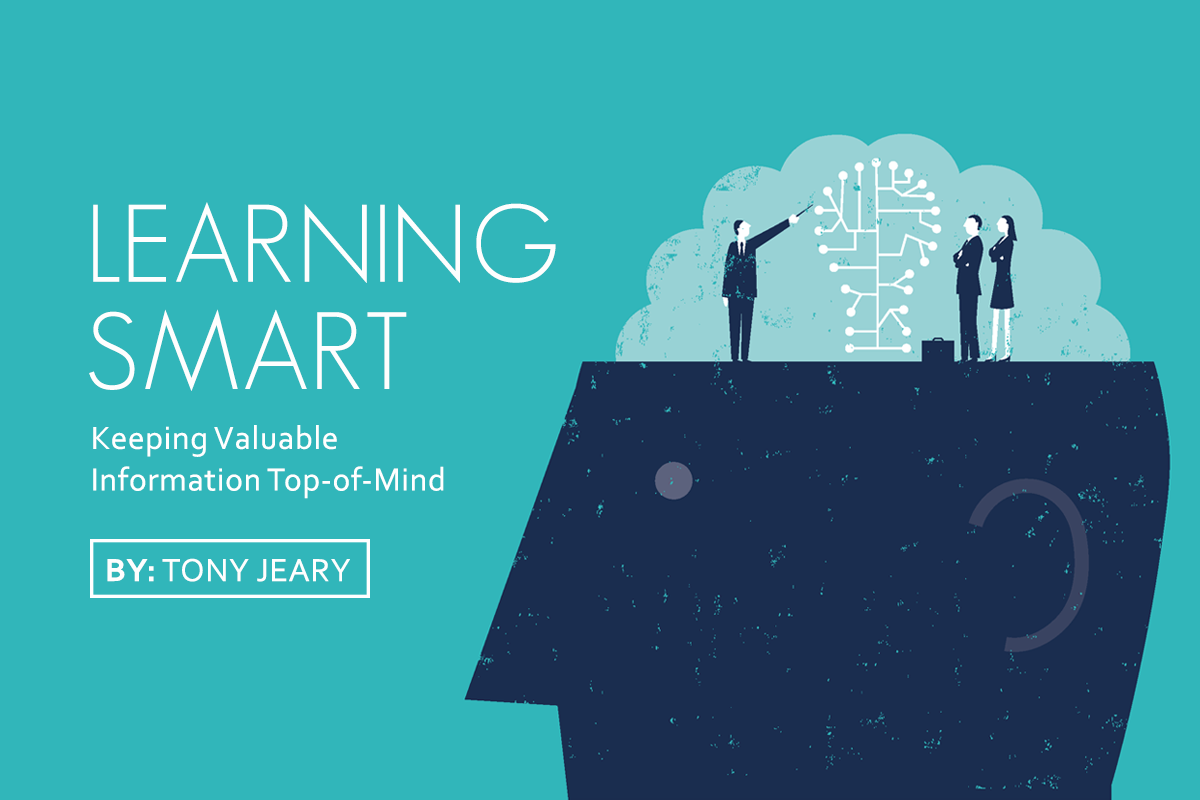 If you recall my previous blog post, Epiphanies: Mental Miracles That Expand Your Thinking,
If you recall my previous blog post, Epiphanies: Mental Miracles That Expand Your Thinking,
I am a big believer in epiphanies (mental miracles) that expand your thinking and create bigger wins.
I recently had an epiphany about how we accumulate and assimilate information. Let me explain.
What does the self-talk, “I read a book,” mean to you?
As high achievers committed to increasing our knowledge bases, I think we all read a lot of informational, nonfiction books based on a catchy title or subject. We spend two to four hours studying the book and (hopefully) for a little while we apply its lessons to our daily activities. But I believe that unless you really spend time intentionally and actively reflecting on that book’s contents, it “wears off” and stops being as valuable as it could be to you.
The Disconnect
This happens, in my opinion, because we have so much information coming into our minds on a daily—or even hourly—basis. There’s little chance we can consciously remember every bit of data that comes our way, regardless of its worth to us.
Think about that extraordinary book we’ve probably all read, Stephen Covey’s Seven Habits of Highly Effective People. Seven isn’t an overwhelming number of lessons to keep top-of-mind, but how many of those habits can you clearly remember right this second? Not that many, right?
My Version of CliffNotes
I’ve read and studied more than most, perhaps thousands of similar books based on personal and professional self-improvement. Many years ago, to avoid the loss of value of that knowledge, I started recapping them into short documents (my own CliffsNotes) that outline very important points and key lessons.
I originally thought of this as a great knowledge base to have for my own use. But over the years I’ve strategically shared these recaps with our clients and their teams. They find this quick way to “read” a book a tremendous time-saver and reference later on.
Of course, there are many other tools to keep the books you read and the lessons you need top-of-mind.
How to Soak Up More Information
Tony Bingham, president of ATD and one of my coaching clients, hosted their organization’s annual event here in Dallas, TX, this year. During the event, I was introduced to the folks at Bar Charts who make the laminated six-panel highlight cards often seen at Barnes & Noble. It’s a system that condenses complex sets of information (software shortcuts, foreign languages) into a simple, graphically interesting tool.
Since that time, I partnered with Bar Charts to create my own version that showcases the best content I’ve developed over the last two decades.
In summary, learning smart is clearly the way to go! Read, watch videos and bring content into your life daily.
Create systems for yourself so you can use, leverage, and share the best ideas. — Click to Tweet
Tips for Keeping Information Top-of-Mind
- Utilize the notes feature of your phone to archive important information.
- Highlight and recap books, collecting key phrases and very important points.
- Create one-page documents that visually depict important data, goals, vision, etc.
- Write down shortcuts or processes, and display them where they are most used.
- Keep a small notebook in your car or by your bed to jot down thoughts or ideas.
- Save bookmarks and favorites in your preferred web browser, organized for later reading or sharing.
- Use Post-It notes for reminders, and stick them where you have to pay attention to them (or use the Stickies app on your computer if you use a Mac).
- Record conversations or calls using an app or handheld device.
- Clip newspaper or magazine articles and save them in a binder.
- Create laminated business card-sized cheat sheets for shortcuts or other bits of information.